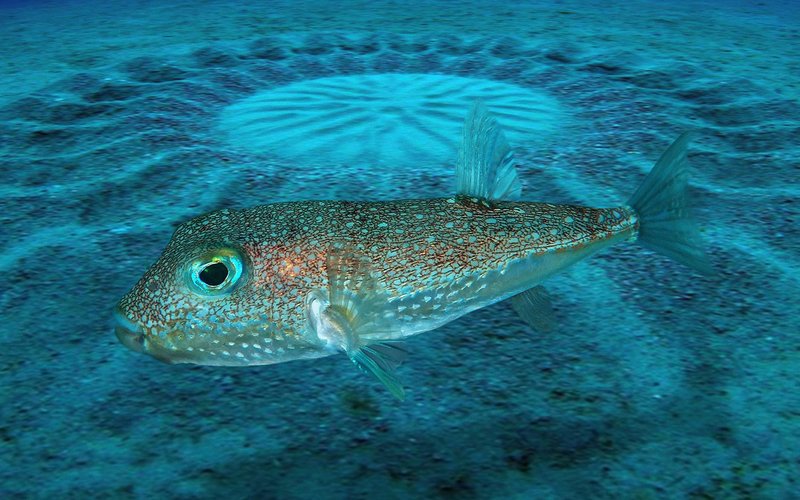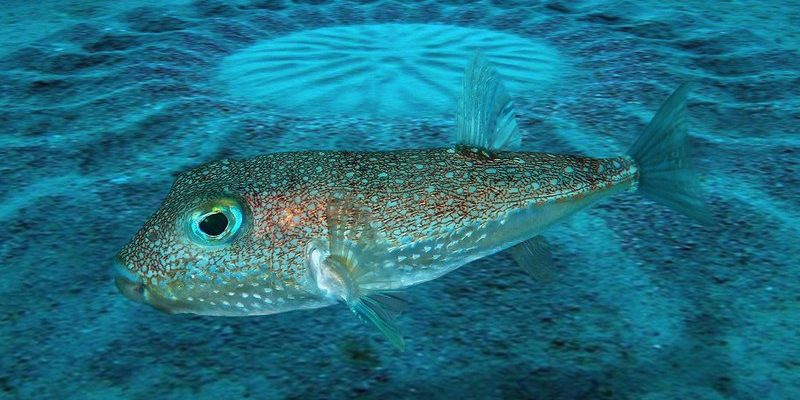
The Japanese Pufferfish, also known as fugu, isn’t just your average ocean dweller. These fascinating creatures have a unique charm that draws the attention of marine enthusiasts and culinary adventurers alike. Imagine being able to inflate into a spiky ball, deterring potential predators with your unusual look. That’s just one of the quirks that makes the Japanese Pufferfish so special!
But it’s not just about the puffing. This fish is famous for its potential culinary uses, particularly in Japan, where it’s considered a delicacy. However, there’s a catch—these fish are also highly toxic if not prepared correctly. So, let’s dive deeper into the life of the Japanese Pufferfish, exploring its habitat, diet, and the reasons behind its intriguing reputation.
Habitat and Distribution
The Japanese Pufferfish primarily inhabits warm coastal waters around Japan and parts of the Pacific Ocean. You might find them lurking in shallow bays or amongst coral reefs, where they can seek shelter from predators and enjoy their meals. With their preference for sandy or muddy bottoms, these fish often hide among rocks and vegetation, making them harder to spot for both divers and potential threats.
These fish tend to thrive in areas that offer plenty of food options, which is crucial for their survival. They have a diverse diet that mainly consists of algae, crustaceans, and small invertebrates. The availability of food in their habitat significantly influences their growth and behavior. Essentially, you can think of the Japanese Pufferfish as a culinary connoisseur of the ocean, always on the lookout for the tastiest treats!
Interestingly, their habitat is not just a place to live; it’s also a critical part of their survival strategy. By residing in areas with ample cover and food, they can better protect themselves from larger predatory fish. So, while they might puff up to deter smaller threats, their choice of habitat plays a huge role in keeping them safe.
Physical Characteristics
The appearance of the Japanese Pufferfish is striking, to say the least. Typically, they grow to about 12 inches long, although some can reach up to 24 inches! Their bodies are stout and round, giving them that iconic puffed look when they inflate. When you see one swimming gracefully, it’s hard to imagine that it can transform into a spiny ball at a moment’s notice.
One of the key features of the Japanese Pufferfish is its skin, which is typically smooth when they’re in their normal state, but can be covered in spikes upon inflation. This physical transformation is not just for show; it acts as a formidable defense mechanism against predators. Think of it as nature’s version of wearing armor—only much cuter!
In addition to their unique shape, these pufferfish come in various colors and patterns, ranging from muted browns and greens to vibrant yellows and blues. In the wild, these colors help them blend into their surroundings, making it harder for predators to spot them. So, if you ever find yourself snorkeling in Japan, keep an eye out for these charismatic fish—it’s like finding a treasure in the ocean!
Diet and Feeding Habits
The diet of the Japanese Pufferfish is quite varied, consisting mainly of algae, crustaceans, and mollusks. They have strong beaks that allow them to crack open shells of sea urchins and snails. Imagine having a snack that’s encased in a hard shell; you need the right tools to get to the tasty part inside! Pufferfish have evolved perfectly for this, making sure they can enjoy a rich diet.
Interestingly, these fish also play a role in their ecosystem by helping to control algae growth. They munch on algae, keeping it in check and ensuring the health of their underwater environment. This makes the Japanese Pufferfish a critical player in maintaining the balance of their habitat. It’s a perfect example of how interconnected all species are in the ocean—one fish’s meal can help sustain the entire ecosystem.
You might be wondering how they find their food with so much going on underwater. Japanese Pufferfish rely on their keen sense of smell to detect food in the water. Once they catch a whiff of something tasty, they head in that direction, ready to feast. It’s a fascinating glimpse into how these creatures navigate their world, always on the lookout for their next delicious bite.
Defensive Mechanisms
When it comes to protecting themselves, Japanese Pufferfish have a few tricks up their sleeves. The most well-known defense mechanism is their ability to inflate into a large, spiny ball. This puffing up occurs when they feel threatened, making them look much larger and more intimidating to predators. It’s like wearing a big, intimidating costume at a party—it can definitely deter unwanted attention!
But wait, there’s more! These fish also have a potent toxin called tetrodotoxin, which is found in their skin, organs, and even muscle. This toxin is incredibly deadly, making the Japanese Pufferfish one of the most toxic animals in the world. It’s nature’s way of saying, “Don’t mess with me!” This powerful defense not only protects them from predators but also adds an air of intrigue and danger that makes them even more fascinating.
However, the presence of this toxin complicates their culinary appeal. In Japan, only licensed chefs can prepare fugu dishes, and they undergo extensive training to ensure that they can serve the fish safely. It’s a risky business, but for those adventurous enough to try it, the thrill of eating this delicacy is unmatched. This blend of danger and allure is part of what makes the Japanese Pufferfish so captivating!
Cultural Significance
The Japanese Pufferfish holds a special place in Japanese culture, particularly in its cuisine. Known as fugu, this fish is a delicacy that has been enjoyed for centuries. Eating fugu is not just a meal; it’s an experience filled with rituals and traditions. People often gather at specialized restaurants where licensed chefs prepare the fish with precision and care, ensuring it’s safe to eat.
Many people enjoy the subtle flavors of fugu and its unique texture. Eating it is often associated with special occasions and is viewed as a luxury experience. Imagine celebrating with friends over a beautifully presented plate of fugu sashimi, feeling a mix of excitement and a dash of trepidation! It’s a culinary adventure that brings people together.
However, the risks involved also contribute to its mystique. The stories of fugu-related incidents, while not common, add an element of danger to the dining experience. This duality of thrill and caution makes fugu dining a unique cultural event, cherished by many for both its taste and the stories wrapped around it.
Conservation Status
The status of the Japanese Pufferfish in terms of conservation has raised some concerns. While not currently classified as endangered, various factors threaten their populations. Overfishing, habitat loss, and pollution can have significant impacts on their numbers. As we continue to explore and develop our coastal habitats, it’s crucial to consider the effects on this quirky fish and its environment.
Efforts are being made to ensure sustainable practices in fishing and to raise awareness about the importance of marine ecosystems. Organizations and local governments are working together to promote conservation initiatives aimed at protecting the Japanese Pufferfish and their habitats. It’s like having a team of superheroes, each playing their part to protect these fascinating creatures!
As individuals, we can also contribute to their conservation by supporting responsible seafood consumption and advocating for cleaner oceans. Every small effort counts, and by making informed choices, we can help preserve the environments that these amazing fish call home. A healthy ocean means a healthy Japanese Pufferfish population!
Interesting Facts About Japanese Pufferfish
| Common Name: | Japanese Pufferfish |
| Scientific Name: | Takifugu rubripes |
| Habitat: | Coastal waters of Japan and Pacific Ocean |
| Size: | Up to 12 inches (30 cm) or more |
| Diet: | Algae, crustaceans, and small invertebrates |
| Lifespan: | Up to 10 years in the wild |
| Toxin: | Tetrodotoxin |
FAQ
What happens if a Japanese Pufferfish inflates?
When a Japanese Pufferfish feels threatened, it can inflate its body by taking in water or air. This makes it much larger and can deter predators. The spikes that protrude from its skin add an extra layer of defense. It’s a fascinating and effective survival technique!
How is fugu prepared in restaurants?
Preparing fugu is an art that requires extensive training. Only licensed chefs can safely handle and prepare the fish, ensuring that toxic parts are removed. The process involves skillful slicing to create aesthetically pleasing dishes while keeping it safe for consumption. It’s more than just cooking; it’s about respecting the fish and the tradition.
Can you keep a Japanese Pufferfish as a pet?
Keeping a Japanese Pufferfish as a pet is possible, but it requires a proper aquarium setup and a keen understanding of their needs. They need ample space, clean water, and a balanced diet. If you’re up for the challenge, these fish can be rewarding pets due to their unique behaviors.
Is the toxin from Japanese Pufferfish harmful to humans?
Yes, the toxin found in Japanese Pufferfish, known as tetrodotoxin, is highly toxic and can be deadly if consumed. It affects the nervous system and can cause paralysis or even death. This is why eating fugu is risky and should only be done with properly trained chefs handling the fish.
What other species are related to the Japanese Pufferfish?
The Japanese Pufferfish is part of the Tetraodontidae family, which includes many other pufferfish species. Some common relatives include the Hawaiian Pufferfish and the Dog-faced Pufferfish. They share similar characteristics, such as the ability to puff up and unique beak-like jaws.
Why is the Japanese Pufferfish considered a delicacy?
Fugu is considered a delicacy due to its unique flavor and texture. Eating it is often associated with luxury and excitement, given the risks involved. The preparation process is meticulous, adding to its appeal as a gourmet experience for adventurous eaters.
How do Japanese Pufferfish affect their ecosystem?
Japanese Pufferfish play a vital role in their ecosystems by controlling algae growth and contributing to the balance of marine life. Their foraging habits help maintain the health of coral reefs and sandy bottoms, showcasing the interconnectedness of ocean species.
Are there any conservation efforts for Japanese Pufferfish?
Yes, there are ongoing conservation efforts aimed at protecting the Japanese Pufferfish and their habitats. These initiatives focus on promoting sustainable fishing practices and reducing pollution, helping to ensure that future generations can enjoy these quirky fish.
What are the signs of tetrodotoxin poisoning?
Signs of tetrodotoxin poisoning can include numbness, dizziness, respiratory failure, and paralysis. If someone suspects they have ingested fugu improperly, it’s crucial to seek medical attention immediately, as the effects can progress rapidly and be life-threatening.
How do Japanese Pufferfish find food?
Japanese Pufferfish rely on their strong sense of smell to locate food. They often search around coral reefs and sandy areas for algae and small invertebrates, using their beaks to crack open shells and access the nutritious meals hidden inside. It’s a clever way to forage!
Do Japanese Pufferfish have any predators?
Yes, despite their defenses, Japanese Pufferfish have a few natural predators. Larger fish, sea birds, and sometimes humans can pose threats. However, their ability to puff up and their toxic nature provides them with a significant advantage against most predators.
How long can Japanese Pufferfish live?
In the wild, Japanese Pufferfish can live for about 10 years. Their lifespan can vary based on environmental conditions and threats in their habitat. Proper care in captivity may extend their lifespan, showcasing how well they can thrive when their needs are met.

